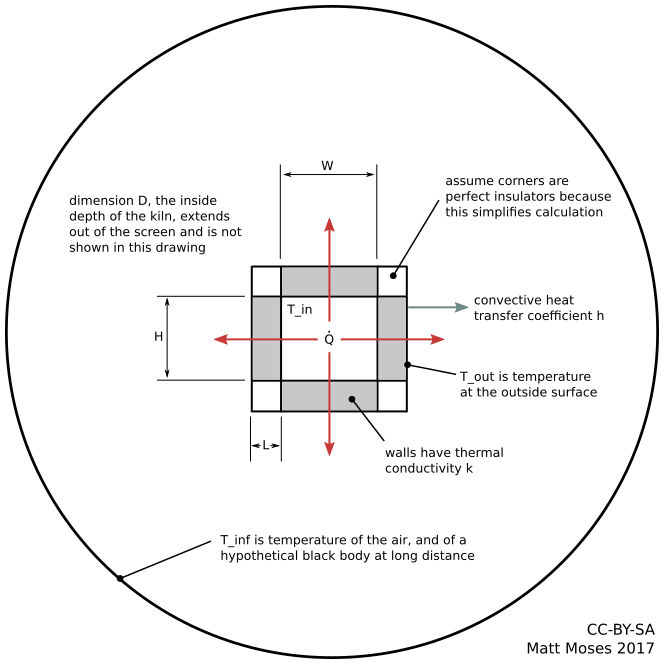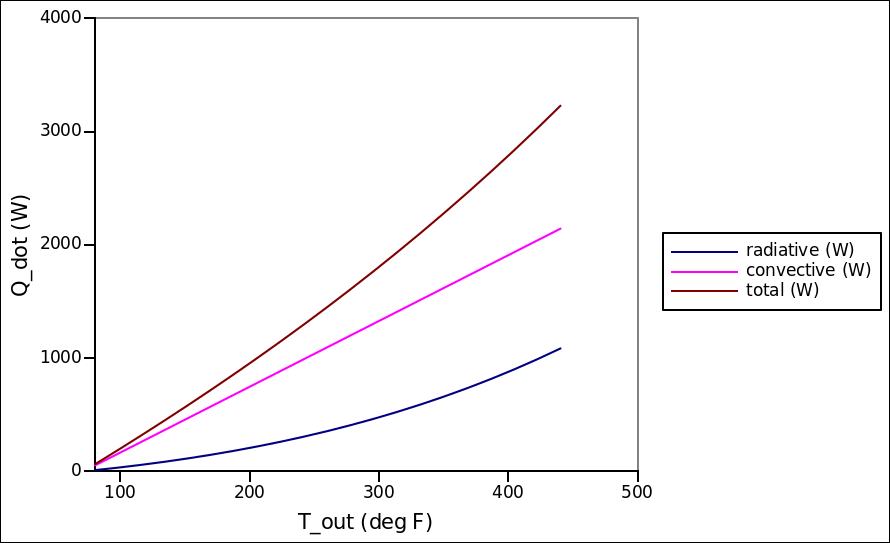The most important requirements for the kiln are that it
- is powered with simple mains electricity
- gets hot enough to melt aluminum
- gets hot enough to fire clay pottery
Being a modest man in a modest house in the United States, "mains electricity" means about 15 amps at about 115 volts AC. To be conservative we'll assume that by the time all the current makes its way through the wiring, we'll get about 1500 watts of power at the kiln's heating element.
Pure aluminum melts at 1220 °F (660 °C). A common aluminum alloy called 6061 melts at 1085 °F (585 °C). So to be safe let's just say we need to get to 1220 °F (660 °C) to melt whichever aluminum scrap we may be dealing with.
Firing (and especially glazing) pottery can get somewhat complicated. If you consult a kiln firing chart you will find a bewildering array of different effects that take place at a range of temperatures from about 750 to 2550 °F (400 to 1400 °C). An acceptable mid-range temperature to aim for seems to be about 1800 °F (1000 °C). This should be adequate to fire simple objects made from the natural clay used in this project. As a point of reference, the heat color of an object at 1800 °F is orange.
At this point we have several important design parameters tentatively chosen:
- design temperature T_in = 1800 °F (1000 °C)
- heater element power Q_dot = 1500 W
- wall thickness L = 4.5 inches (11.4 cm)
- nominal wall thermal conductivity k = 0.6 W/mK
The next step is to run some heat transfer calculations and see if we can arrive at a practical kiln design that is consistent with these parameters. We could go crazy with finite element analysis software, but (see above) I am a modest man in a modest house so instead we will make some crude assumptions, simplify the problem to the fullest extent possible, put some equations into a spreadsheet, and twiddle the numbers until it works.
Here is a drawing showing how the heat transfer problem is set up:

Basically we assume the kiln is a just a box with six walls, and use 1D heat conduction to model the wall, and convection and radiation transfer from the outside of the wall to ambient. This model assumes the outside temperature is uniform across the entire kiln, and the inside temperature is uniform as well. Heat conduction through the wall is just
where Q_dot is the rate of heat transfer in watts, k is thermal conductivity in W/(m*K), T_in and T_out are inside and outside wall temperatures respectively (in Kelvin), L is wall thickness (in meters), and A is the heat conduction area (m^2), which in the case of our box kiln is
The outside temperature of the kiln T_out is found by making a wild guess about the convective heat transfer coefficient h and then using the relation
where T_inf is the "temperature at infinity" or basically just the room temperature (in Kelvin), and sigma is the Stefan-Boltzmann constant in W/(m^2 K^4). The convective heat transfer coefficient in air typically varies between 10 and 100 W/(m^2 K) (source). For no particular reason we use a value of h = 30 W/(m^2 K) because that's close to the geometric mean of 10 and 100.
We could solve the fourth order polynomial analytically for T_out, but instead we can hack together a solution with a spreadsheet, by plotting Q_dot as a function of T_out and then manually picking off the plot the T_out corresponding to Q_dot = 1500 W. Once we determine T_out, we plug it into the conduction equation above to get T_in.
The spreadsheet was created in Gnumeric - .ods and .xls versions have been uploaded to the files section. After a bit of fiddling we get the following plot and associated parameters:


The inside kiln dimensions are H = 10.5 inches, D = 9 inches, W = 9 inches (or 26 X 22 X 22 centimeters). This doesn't quite get us to 1800 °F (1000 °C) but it's close enough to go for it and hope we pick up a few extra degrees here and there with a bit more power and a bit better insulating bricks than we've accounted for.
 Matt Moses
Matt Moses
Discussions
Become a Hackaday.io Member
Create an account to leave a comment. Already have an account? Log In.